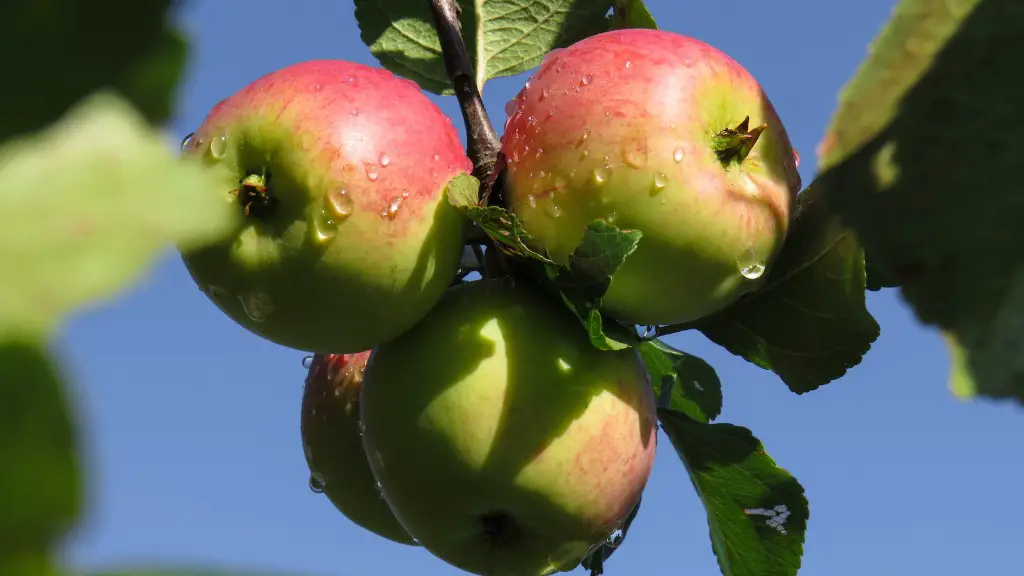Introduction
Can you grow a cherry tree from a pit? The answer is yes, you can. But do not expect to see immediate results as you will need to be patient and nurture the tree with plenty of care over many years as it grows. The process is not difficult but it definitely requires some dedication. If you are up to the challenge, read on to find out how to plant cherry pits and grow a tree.
Background
Cherry is a type of stone fruit, often cultivated for its fruits, edible kernels and flowers. Stone fruits such as cherry are propagated mainly through buds, while the pits can be germinated to produce trees. Growing a cherry tree from a pit follows the same process as most other seed propagation- soak the pits in water to soften the hard outer shell and encourage germination.
The cherry pit will eventually sprout a root, which will develop into a sapling. Once the sapling is ready to be transplanted, it should be placed in a sunny, well-drained location with adequate space for growth. The tree will require plenty of water and regular pruning until it reaches maturity.
How To Plant Cherry Pits
The process of planting a cherry pit is fairly straightforward and can be easily done by anyone. First, select a fresh cherry, wash it, remove the pit and scrub it clean. Soak the pit in tepid water for 12 to 24 hours before planting.
Once the pit has been soaked, you can then begin the planting process. Choose a spot with full sun and well-drained soil. Dig a small hole, approximately 1 inch deep and place the pit into the hole. Cover the pit with soil and lightly water the area. Place a layer of mulch on top of the planting area to help retain water and prevent weeds from sprouting.
Keep an eye on the area and water it thoroughly once a week. With proper care, the cherry pit should begin to sprout. The sapling should take a few weeks to develop enough to be transplanted. Once transplanted, the tree should be watered regularly, pruned and fertilized according to the plant’s needs.
Expert Advice
According to experts, it is crucial to select fresh, ripe cherries as this helps ensure that the pit inside is viable. To check if a cherry is ripe, look for one that is dark red in color and slightly soft to the touch. Avoid any berries that are discolored or have signs of decay.
Planting in fall or winter is best as this allows the sapling to become established before the harsh weather sets in. If planting in spring or summer, keep an eye on the temperature and the amount of rainfall, especially if temperatures become too hot or there is insufficient rain.
Fertilizing is also beneficial when growing cherry pits, as this helps to promote healthy growth and development. For best results, opt for a slow-release fertilizer and use it according to the instructions on the packaging.
Insights And Analysis
The process of planting and growing cherry pits can be rewarding. Not only is it a great way to get into gardening, but it also helps fulfill the ultimate goal of nurturing a tree from the very beginning. Growing a cherry tree from a pit also encourages the understanding of how plants and trees grow and should be approached with an open while respecting the natural process.
Furthermore, growing a cherry tree from a pit is an environmentally-friendly way to enjoy fresh sweet cherries as it is chemical free and requires no genetic modification or artificial means. In addition, it can help support pollination and provide a natural source of food for birds, butterflies, and other wildlife.
It is important to remember that patience is key when planting cherry pits as it can take several years for the sapling to grow into a fully mature tree. Pruning also has to be done on a regular basis in order to keep the tree healthy and strong. Although this is a long-term project, the reward of picking cherries from a tree you grew yourself is well worth the effort.
Extra Care And Maintenance
Once the sapling is established and has grown into a mature tree, there are some additional steps that should be taken in order to keep it healthy and strong. It is important to prune the cherry tree on a regular basis in order to promote new and healthy growth and also to prevent disease and pests from entering into the tree. Regular fertilization can also help support growth.
In addition, keep an eye out for pests and diseases. If any are spotted, act quickly and use an appropriate pesticide or fungicide to treat them. Lastly, water your tree regularly and keep the area around the tree weed-free. Doing so will ensure that your cherry tree grows strong and healthy.
Recognizing Varieties
It is important to remember that cherry pits do not always produce the same variety of the tree. If a specific variety is desired, it is best to obtain grafted specimens or buds that are known to produce the desired variety. The chances of obtaining the desired variety are higher with this method.
When planting cherry pits, look out for varieties with disease-resistant characteristics as this will reduce the amount of maintenance and help ensure that the tree grows strong and healthy. It is also important to consider the size and shape of the tree as some trees require more space than others.
When it comes to choosing a variety, it is best to select a type of cherry tree that is well adapted to both local climate and soil conditions. This will help to ensure that the tree grows properly and the cherries taste delicious.
Environmental Impact
Growing a cherry tree from a pit also has a positive environmental impact. Since the seed has not been genetically modified, it reduces the amount of harm done to the environment. The tree will also incorporate carbon into the atmosphere as it grows, helping to reduce the amount of carbon dioxide in the atmosphere.
In addition, the tree can help produce oxygen, improve the quality of the soil, and provide a source of food and habitat for beneficial insects, birds, and other wildlife. Growing cherry trees from pits is also an economical way to enjoy fresh cherries as you will no longer need to purchase them from the store.
It is worth noting that it is still best to purchase a grafted or budded tree when looking for specific varieties as growing a cherry tree from a pit is biomass production. This means that the sapling is likely to be different from the fruiting mother tree. Thus, there is no assurance of what kind of variety will be produced.
Consumer Benefits
Aside from environmental impact, growing a cherry tree from a pit also provides a lot of benefits to the consumer. By growing their own cherry tree, consumers will no longer need to purchase cherries from the supermarket, reducing their costs and allowing them to enjoy the satisfaction that comes from harvesting their own crop.
In addition, cherries are a good source of vitamins and minerals, with significant amounts of vitamin C, vitamin B6 and magnesium. Growing a cherry tree from a pit is also a great way to ensure that the cherries will be free from chemicals and pesticides, providing the consumer with a healthy and fresh snack.
Moreover, the experience of planting and tending to a cherry tree is a fun and engaging activity that can be enjoyed by the whole family. Planting a cherry pit is not only a unique way to connect with nature, but also a great opportunity to learn about how plants and trees grow and develop.
Conclusion
Growing a cherry tree from a pit is an achievable and rewarding task that can be completed by anyone. Not only does it provide a supply of fresh cherries, but it also has a positive environmental impact and can help teach valuable lessons about caring for plants and trees. It may take several years for the sapling to grow into a full-sized tree, but when it finally does, you will be able to reap the sweet rewards.




